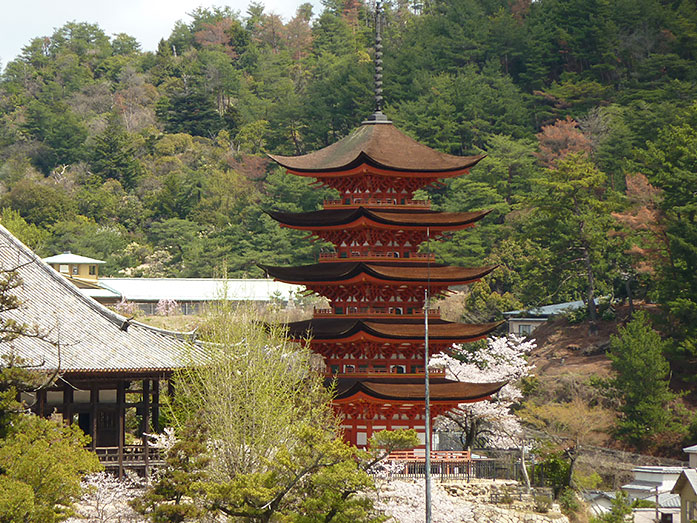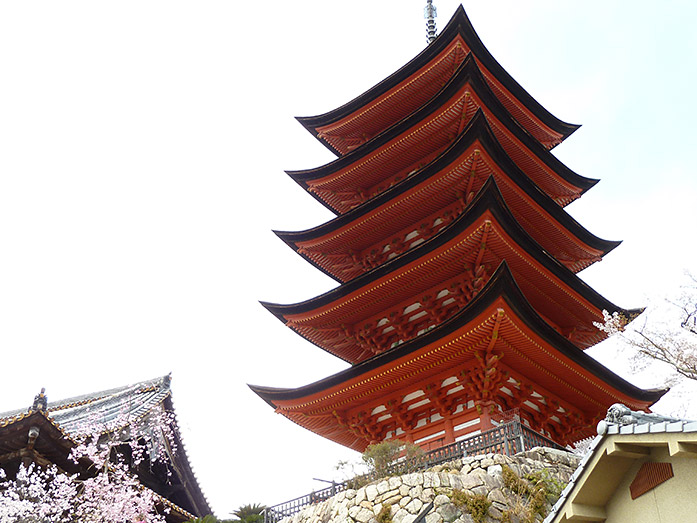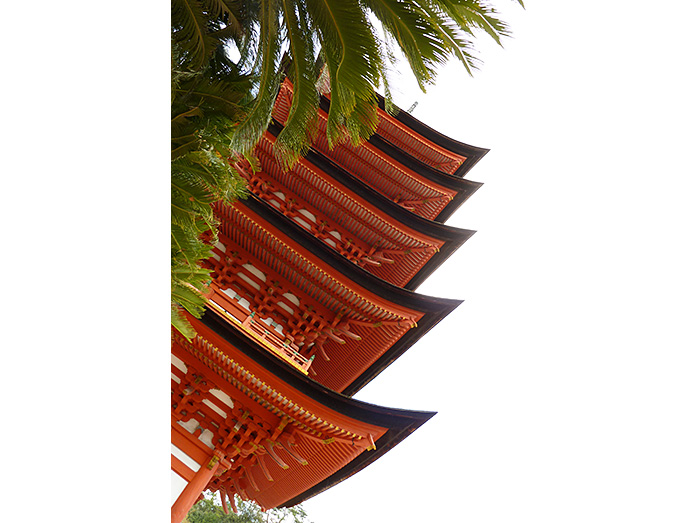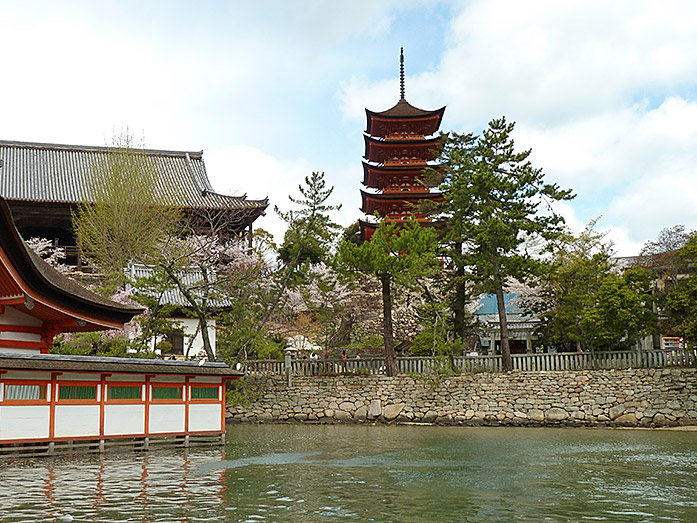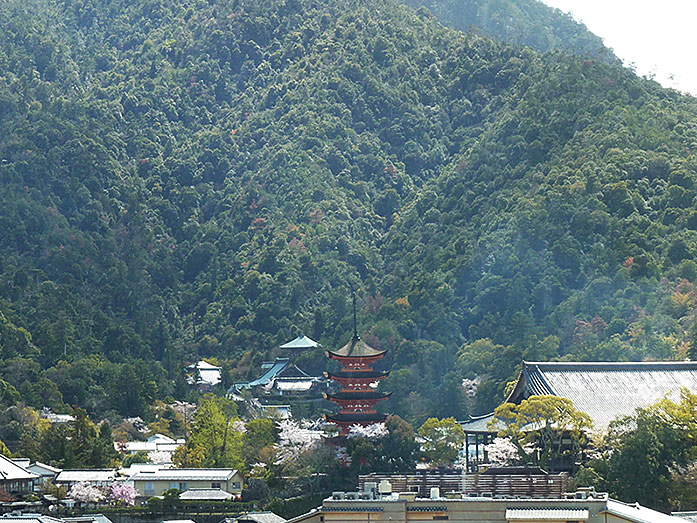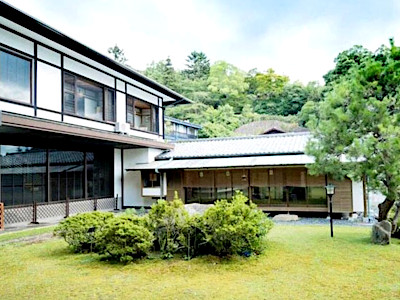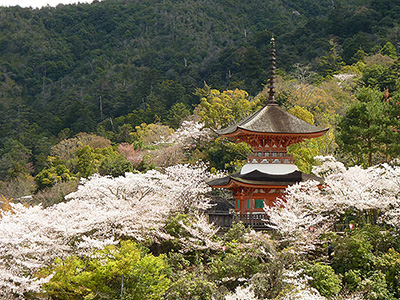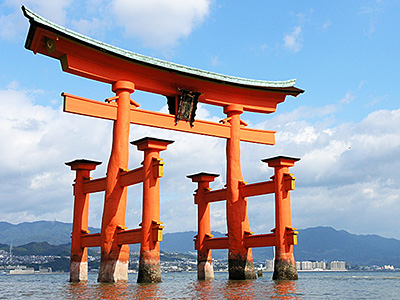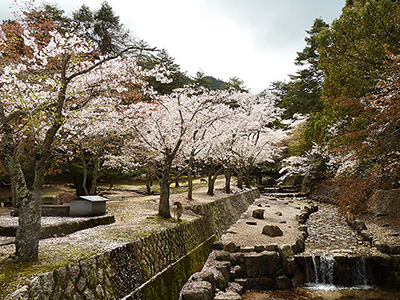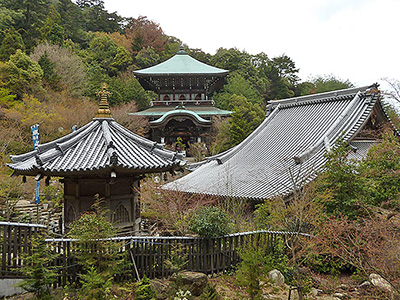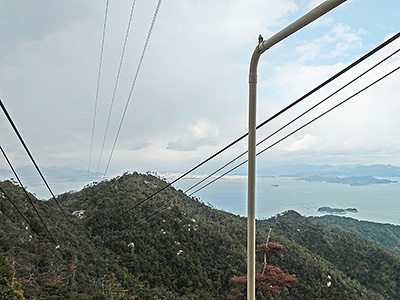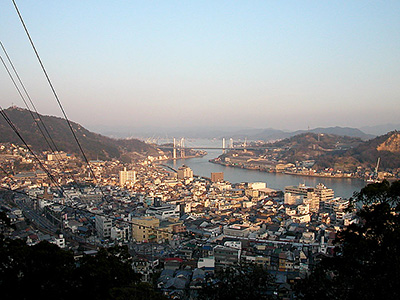Gojunoto (Five-storied Pagoda) on Miyajima
This post can contain affiliate links, which means that we may receive a small commission if you make a purchase using these links.
Facts & Figures
Goju-no-to (Five-Storied Pagoda) on Miyajima Island is dedicated to the Buddhist God of Medicine. The main deity (god) is accompanied by the Buddhist saints Monju (Wisdom Buddha) and Fugen (Mercy Buddha). The vermillion-colored pagoda with a height of 27.6 meters is an impressive sight. The mainly Japanese architectural style shows also some Chinese influence, especially in parts of the top of the wooden pillars.
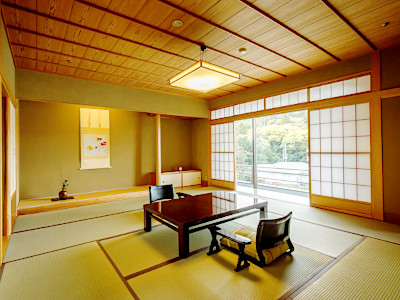 Best Places to Stay on Miyajima >
The roof is made with layers of Japanese cypress bark shingles. Goju-no-to is located on a little hill, which offers you great views over the Senjokaku Shrine (Hall of One Thousand Tatami Mats), Itsukushima Shrine, the village Miyajima-cho, and the bay area. The cherry blossom season at the end of March and the beginning of April is the best time to visit this beautiful place.
Best Places to Stay on Miyajima >
The roof is made with layers of Japanese cypress bark shingles. Goju-no-to is located on a little hill, which offers you great views over the Senjokaku Shrine (Hall of One Thousand Tatami Mats), Itsukushima Shrine, the village Miyajima-cho, and the bay area. The cherry blossom season at the end of March and the beginning of April is the best time to visit this beautiful place.
- Miyajima Goju-no-to:
- Closed - pagoda is not open for the public
My tips for local activities
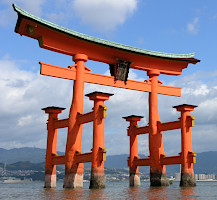
How about exploring Itsukushima Shrine on Miyajima and other sightseeing spots in Hiroshima with an English-speaking tour guide? The personalized tour by our partner GetYourGuide can take between 4 - 6 hours. For more details check out this page >
History
Goju-no-to was built in 1407 and reconstructed in 1533. A special moment came in 1900 when the structure was declared a Specially Preserved Building. In 1945 major work was done to bring back the Five-Storied Pagoda to its former glory.
Location

The Five-Storied Pagoda (Goju-no-to) is located at Miyajima Island right at the entrance of the Itsukushima Shrine.
Address: 1-1 Miyajimacho, Hatsukaichi, Hiroshima 739-0588, Japan
How to get to Goju-no-to?
- 4-5hrs from Tokyo to Hiroshima Station by JR Tokaido-Sanyo Shinkansen Line
- 25min from Hiroshima Station to Miyajima-guchi Station by JR Sanyo Line and
- 10min from Miyajima-guchi Station to Miyajima by ferry
Sightseeing spots
Inside the Gojunoto Pagoda (unfortunately not open to the public):
Central Pillar - Usually a pillar would reach from the roof to the foundation, but in this case, the main pillar stretches only to the second story from the roof. This unique feature was installed to have a counterweight in case of an earthquake. The first story is supported by 16 pillars and each of them has the name of its donor displayed.
Interior design - You will find here paintings of a dragon (Nihon no ryu), lotus flowers, the Shingon Hasso sutra on the ceiling, and the famous Eight Views of Shohshoh.
Nearby:
Senjo-kaku - This huge wooden hall was built in 1587 by shogun Toyotomi Hideyoshi (1537 - 1598). It is the largest building on Miyajima. Read more >
Itsukushima Shinto Shrine - The famous UNESCO World Heritage Site is a must-see destination in Japan. Read more >
Miyajima-cho - The only village on the island Miyajima has the name Miyajima-cho. At the moment 1942 people living here and it was merged with the city of Hatsukaichi in 2005.
Mount Misen - Enjoy the view from the top of the mountain (530m). It is amazing. Read more >
Daiganji - Daiganji is an important Buddhist temple dedicated to the Goddess Benzaiten. The temple is dating back to the Heian period (794 to 1185).
Daishoin Temple - Daisho-in temple complex on Miyajima Island is known as the most important temple of the Shingon Buddhist school of Omuro. It is also the oldest temple on the island dating back to 806. Read more >
Miyajima Aquarium - It reopened in August 2011 and it is a Seto Inland Sea-themed aquarium.
Museum of Historical and Folklore Materials - The museum was constructed in the 1830s. More than 3000 items about the Miyajima history are on display.
Momijidani Park - The park is located at the base of Mount Misen. The best time to come here is during the Autumn season.
Taho-to - A beautiful two-storied pagoda with a height of 15.6 meters. The pagoda is located south of the famous Itsukushima-jinja. Read more >
Omoto Park - It is one of the best cherry blossom spots on Miyajima island. Read more >
Festival & Events (dates can change without notice)
February
Miyajima Oysters Festival (9th till 10th)
Miyajima is famous for its oysters. This festival gives you the chance to enjoy this delicious food.
March
Kiyomori Festival (22nd)
The Itsukushima Shrine prayer parade is held from 1 to 3 pm.
August
Kangensai Festival (4th)
The largest annual festival at the Itsukushima Shrine dates back to the Heian period (794 to 1185).
Miyajima Water Fireworks Display (11th)
Every year more than 300 000 visitors enjoy this spectacle. It is considered to be one of the most famous in Japan.
November
Hiwatarishiki in Daiganji (3rd)
Monks from Miyajima island walk over the fire during the ceremony. If you are brave enough you can join them:)

